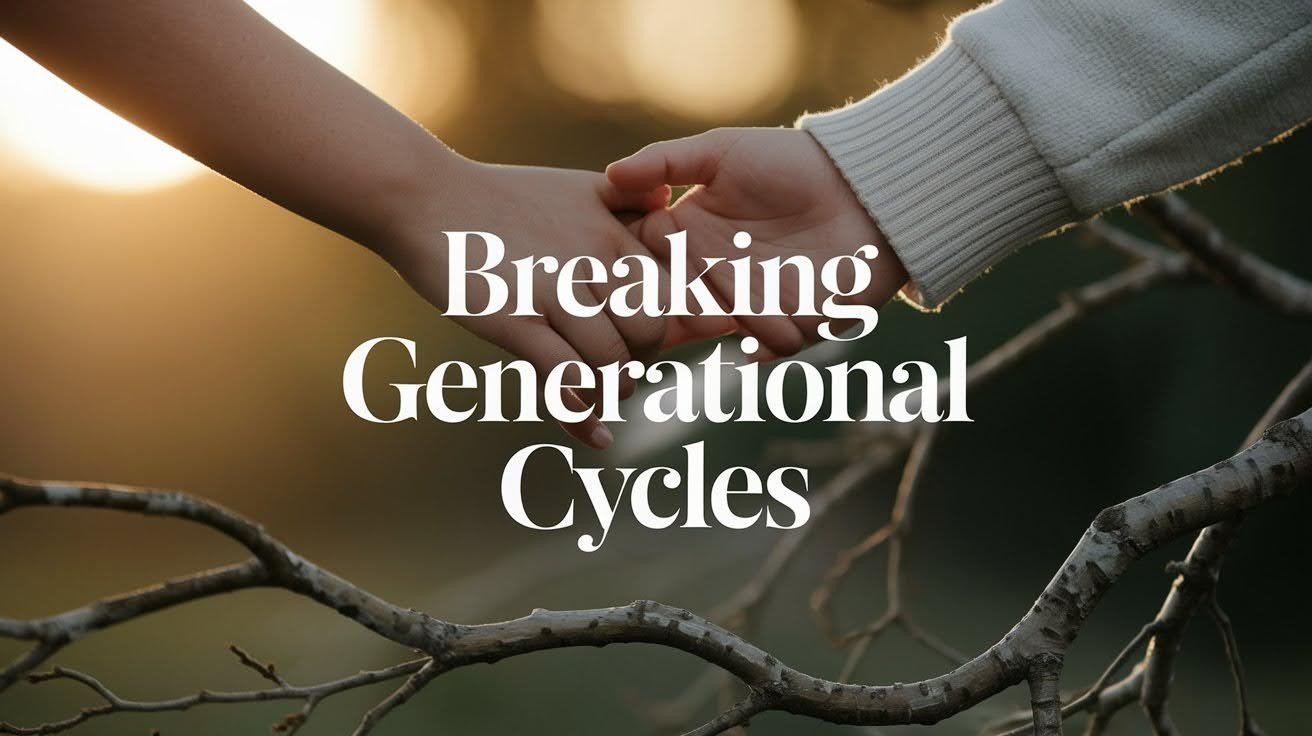Have You Ever pause Sentence With Your Child And Thought, “I sound Just Like My Mom? That Moment Can Feel Unsettling, And It Also Powerful. It’s Wake Up Call That Family Patterns Run Deeper Than We Realize.
Generational Cycle Don’t just Include, traits like eye color Or Height They Extend To Habits Ways Of Thinking, And Emotional Response. Many Families Unknowingly Repeat Behaviour That impacts mental health, connection, and overall being.
The encouraging part? You can change this. Recognizing these patterns is the first step toward breaking them. With intention, Self, self-awareness, and consistent effort, it’s possible to create healthier family relationships and raise children in a way of fosters love, understanding, and resilience. These cycles just don’t pass down physical traits like hair color or eye color.
What Are Generational Cycles?
Generational cycles happen when families repeat the same behaviors, emotions, and problems over and over again. These patterns can include how parents treat their children, how family members handle stress, and how they form relationships with others.
The key difference between what we inherit through genes and what we learn is important to understand. While we can’t change our DNA, we can change the learned behaviors that get passed down through families.
Practical Strategies for Breaking Generational Cycles
Real change requires specific actions and tools that help you build new patterns while letting go of old ones.
Self-Reflection and Awareness Building
Start by looking at your childhood without judging yourself or your parents. Notice what patterns existed in your family and how they might show up in your current life.
Pay attention to what triggers strong emotional reactions in you. These moments often point to areas where generational patterns are still active and need your attention.
Creating New Values and Models
Start by defining your personal values and deciding the kind of parent, partner, or family member you want to be. Clarity in your values creates a strong foundation for healthier choices.
Next, look for new role models who demonstrate positive relationships and emotional skills. Surrounding yourself with examples of healthier patterns makes it easier to practice them in your own life.
Finally, build supportive connections with people on a similar journey and use learning resources like books, classes, or healing groups. These tools provide encouragement, guidance, and strength as you work on breaking generational cycles.
Mindful Implementation Techniques
A key step in breaking generational cycles is practicing emotional regulation. Learning healthy ways to manage stress, anger, and other difficult emotions helps create stability and healthier interactions within the family.
Modeling desired behaviors is just as important. By showing others how respect, patience, and care work in daily life, you demonstrate what healthy relationships truly look like.
Equally vital is encouraging open communication and supporting individuality. Creating safe spaces for honest expression and allowing each family member to be themselves builds trust, respect, and stronger connections.
Professional Support Systems
Knowing when to seek help is an important part of breaking generational cycles. Therapy offers tools and support that friends or family members often cannot provide on their own.
Exploring different approaches can make the healing journey more effective. Options like family therapy, individual counseling, or support groups create opportunities for growth and connection in safe environments.
Building a healing team adds even more strength. Working with counselors, coaches, or other professionals who understand trauma and family systems ensures you have guidance, encouragement, and expertise along the way.
Breaking Parenting Cycles
Parents who are breaking generational cycles face the unique challenge of healing their own childhood while raising children at the same time.
Recognizing Parenting Patterns
Without thinking about it, many parents copy the same methods their own parents used. This happens automatically unless we make a conscious effort to do things differently.
When you become aware of these patterns, you can start making intentional choices about how to parent. This awareness gives you the power to respond to your children based on what they need rather than just repeating what you experienced.
Creating a Healthy Family Life
Setting boundaries with kindness is an important part of parenting. Discipline doesn’t need to involve shame, yelling, or harsh punishmentinstead, it can be firm yet respectful, teaching children responsibility while preserving trust.
Supporting your child’s growth means encouraging their unique interests and strengths. When children feel free to explore and develop their abilities, they gain confidence and build a strong sense of identity.
Equally important is making emotions safe. Allowing children to express their feelings without fear of judgment or punishment fosters emotional intelligence, resilience, and healthier relationships as they grow.
The Re-parenting Process
Healing your own childhood wounds while parenting requires you to give yourself the care and understanding you didn’t receive. This process helps you respond to your children from a place of healing rather than hurt.
Breaking cycles of criticism, control, and emotional neglect means learning new ways to connect with your children. Focus on building trust and safety so your children feel secure in your relationship.
Long-term Healing and Maintenance
Breaking generational cycles isn’t a one-time event – it’s an ongoing process that requires commitment and self-compassion over time.
Accepting the Healing Process
Understanding that this work takes time helps you stay patient with yourself during difficult moments. Each small step forward matters, even when progress feels slow. Healing isn’t linear, and setbacks are normal parts of the process rather than signs of failure.
Creating Lasting Change
The changes you make will affect not just your own life but also future generations in your family. Building new traditions and ways of relating creates a different legacy for your children and their children. Teaching others about healthy relationships through your example shows them what’s possible when someone is willing to do the hard work of change.
Conclusion
Breaking generational cycles takes courage, time, and steady effort to create lasting change in your family line. This work involves recognizing harmful patterns, healing old wounds, and building new ways of relating that support health and growth.
The path isn’t easy, and you’ll face moments of doubt, loneliness, and frustration along the way. However, each step you take toward healing creates positive effects that reach far beyond your own life.
Your commitment to change gives future generations the gift of healthier relationships, emotional skills, and the freedom to be themselves. Remember that progress matters more than perfection, and every choice you make to break old patterns is a victory worth celebrating.
Frequently Asked Questions
How long does breaking generational cycles typically take?
Breaking generational cycles is deeply personal and lifelong work, but with consistent effort, reflection, and professional support, most people notice meaningful changes in themselves and their family dynamics within 1-3 years. Patience and self-compassion are key throughout this journey.
Can I break cycles without cutting off family members?
Absolutely. You can maintain family relationships while breaking cycles by setting clear, healthy boundaries, changing your own reactions, and focusing on personal healing. Over time, your actions can inspire healthier patterns in others without needing to completely distance yourself.
What if my children are already adults? Is it too late?
It’s never too late to create change. Adult children benefit when you acknowledge past patterns, take responsibility, and model healthier behaviors. Demonstrating consistent, intentional choices can foster stronger connections and even influence positive patterns across generations.
How do I know which patterns need to be broken?
Pay attention to recurring issues in your family, such as addiction, mental health struggles, unhealthy relationship dynamics, or harmful parenting styles. Reflect on which patterns cause stress, dysfunction, or emotional harm, and prioritize breaking the ones that impact your well-being.
Is therapy necessary for breaking generational cycles?
Therapy isn’t mandatory, but can be incredibly supportive. Working with a professional provides tools, guidance, and emotional safety to process trauma, change long-standing behaviors, and develop healthier family dynamics. It can accelerate progress and make healing more manageable.








